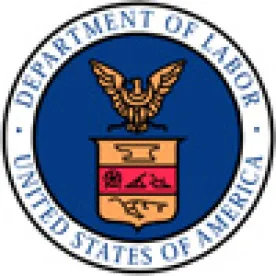Under Executive Order 13658, covered employees must be paid at least $10.10 per hour starting January 1, 2015.
On October 7, the U.S. Department of Labor (DOL) published in the Federal Register the preamble and final rule regarding Executive Order 13658, which raises the minimum wage to $10.10 per hour for certain federal contract workers.[1] The Executive Order will take effect for new contracts or certain contract modifications on or after January 1, 2015. The preamble and rule provide guidance and set the standards for employers regarding which contracts the Executive Order covers and to which workers the Executive Order is applicable. The final rule also sets forth the obligations that contractors must fulfill to comply with the new minimum wage provisions, including details on notice and recordkeeping obligations.[2] The following summary highlights key provisions announced in the final rule.
When will the new minimum wage requirement take effect?
The Executive Order applies to “new contracts” resulting from a solicitation issued on or after January 1, 2015 or a contract that is awarded outside the solicitation process on or after January 1, 2015. Additionally, for purposes of the Executive Order, “a contract that is entered into prior to January 1, 2015 will constitute a new contract if, through bilateral negotiation, on or after January 1, 2015: (1) The contract is renewed; (2) The contract is extended, unless the extension is made pursuant to a term in the contract as of December 31, 2014 providing for a short-term limited extension; or (3) The contract is amended pursuant to a modification that is outside the scope of the contract.”[3]
What contracts does the Executive Order apply to?
The Executive Order applies generally to “any new contract with the Federal Government,” provided that the agreement (1) constitutes a “contract or contract-like instrument” as defined in the final rule and (2) qualifies as one of the specifically enumerated types of contracts described in the Executive Order. The four major categories of covered contracts are the following:
-
Procurement contracts for construction covered by the Davis-Bacon Act (DBA)
-
Service contracts covered by the Service Contract Act (SCA)
-
Concession contracts,[4] including concession contracts excluded from the SCA by the DOL’s regulations at 29 C.F.R. § 4.133(b)
-
Contracts in connection with federal property or lands and related to offering services for federal employees, their dependents, or the general public[5]
The final rule also details a number of contracts that are explicitly excluded from coverage. Excluded contracts include grants within the meaning of the Federal Grant and Cooperative Agreements Act, contracts for services that are exempted from coverage under the SCA, and procurement contracts for construction that are excluded from the DBA’s coverage.[6] Contracts subject to the Walsh-Healy Public Contracts Act and contracts performed outside of the United States are also not covered by the Executive Order.[7]
Who qualifies as a “worker” entitled to the minimum wage required by the Executive Order?
Workers who perform on or in connection with covered federal contracts and whose wages are governed by the Fair Labor Standards Act (FLSA), the SCA, or the DBA are generally entitled to receive the minimum wage set forth in the Executive Order for all time spent performing on or in connection with covered federal contracts. If a worker is entitled to a wage rate higher than the Executive Order minimum wage pursuant to another federal, state, or local law (e.g., the SCA or the DBA), the worker must be paid the higher wage rate.
A worker performs work “on” a covered contract if he or she is “directly engaged in performing the specific work called for by the contract.”[8] A worker performs work “in connection” with a covered contract if he or she performs work activities that are “necessary to the performance of the contract but who are not directly engaged in performing the specific work called for by the contract.”[9] The DOL has given the example of a security guard who monitors a DBA-covered project as someone who performs work “in connection” with a covered contract.[10]
The final rule also notes that some workers, such as bona fide executive, administrative, and professional employees, as defined by the FLSA, are excluded from the Executive Order’s coverage. Additionally, FLSA-covered workers who perform work “in connection with” covered contracts are excluded if they spend less than 20% of their work hours in a particular work week performing in connection with covered contracts.[11]
The Executive Order also applies to certain “tipped employees” (i.e., employees who customarily and regularly receive more than $30 a month in tips). As of January 1, 2015, tipped employees to whom the Executive Order applies and who are notified that their employer intends to take a “tip credit” must be paid a cash wage of at least $4.90 per hour and receive a sufficient amount of tips in the work week to cover the difference between the cash wage paid and the wage per hour that the Executive Order requires. If the employee does not receive sufficient tips to cover this difference, the employer must pay the employee the balance.[12]
What other obligations does the Executive Order place on covered contractors?
In addition to requiring contractors and subcontractors to pay qualifying workers at least the required minimum wage for all hours worked on or in connection with a covered contract, the final rule notes that covered contractors and subcontractors must include the Executive Order contract clause in any covered lower-tiered subcontracts. The final rule does not specifically define covered subcontracts, and determining subcontractor status may be particularly challenging under the implementing regulations. Contractors and subcontractors must also comply with pay frequency and recordkeeping requirements and notify all workers who perform on or in connection with a covered contract of the applicable minimum wage rate. As a practical matter, this notice obligation may require employers to post the required notice both at the site of contract performance as well as at off-site locations.[13]
What are the consequences of violating the Executive Order?
The final rule details a mechanism for the DOL’s Wage and Hour Division (WHD) to investigate complaints of alleged violations of the Executive Order and discusses remedies for violations. Contractors will be held responsible for the failure of any of their subcontractors at any tier to pay the required wages.[14] If a violation is found, the WHD may direct the applicable contracting agency to withhold payments due on the contract or any other contract between the contractor and the federal government, as necessary, to pay workers the full amount of wages due. The WHD may also file a civil action, if necessary, to recover underpayment. Additionally, a contractor who has “disregarded its obligations under the Executed Order” can be debarred from work on federal contracts for a period of up to three years.[15] The final rule contains an anti-retaliation provision to protect workers who complain about noncompliance either to the DOL or to their employer. The final rule also explicitly states that the Executive Order is not intended to limit or preclude a civil action under the False Claims Act.[16]
Next Steps for Employers
The above provides only a high-level summary of some key provisions in what is an extensive final rule regarding Executive Order 13658. Given the severe potential consequences associated with violating the Executive Order, companies that are federal contractors or perform work in connection with federal contracts should carefully review the Executive Order and final rule to determine whether it is applicable. Additionally, because a prime contractor remains responsible for compliance by any covered subcontractor, prime contractors should take steps to ensure that the required contractual language is “flowed down” to subcontractors. Prime contractors may also wish to evaluate indemnity provisions and other protections in their subcontractor agreements.
[1].See Department of Labor, Establishing a Minimum Wage for Contractors, 79 Fed. Reg. 60,634–733 (Oct. 7, 2014), available here.
[2].Along with the final rule, the DOL published a Fact Sheet discussing the Executive Order, which is available here, and a list of Frequently Asked Questions (FAQs), which is available here.
[3]. 79 Fed. Reg. 60,722 (to be codified at 29 C.F.R. § 10.2).
[4]. A concessions contract is defined as “a contract under which the Federal Government grants a right to use Federal property, including land or facilities, for furnishing services. The term concessions contract includes but is not limited to every contract with the principal purpose of furnishing food, lodging, automobile fuel, souvenirs, newspaper stands, and/or recreational equipment, regardless of whether the services are of direct benefit to the Government, its personnel, or the general public.” 79 Fed. Reg. 60,722 (to be codified at 29 C.F.R. § 10.2). Examples of concessions contracts that are generally covered by the Executive Order include contracts with the federal government to operate souvenir shops in national parks or fast food restaurants in federal buildings. See Executive Order 13658 FAQs at Q7.
[5].See 79 Fed. Reg. at 60,723 (to be codified at 29 C.F.R. § 10.3).
[6].See 79 Fed. Reg. at 60,723 (to be codified at 29 C.F.R. § 10.4).
[7].Id.
[8].See 79 Fed. Reg. at 60,724 (to be codified at 29 C.F.R. § 10.4).
[9].Id.
[10].See Fact Sheet: Final Rule Implementing Executive Order 13658.
[11].See 79 Fed. Reg. at 60,723–24 (to be codified at 29 C.F.R. § 10.4).
[12].See 79 Fed. Reg. at 60,726–27 (to be codified at 29 C.F.R. § 10.28).
[13].See 79 Fed. Reg. at 60,727 (to be codified at 29 C.F.R. § 10.29).
[14]. See 79 Fed Reg. at 60,728 (to be codified at 29 C.F.R. § 10.44).
[15]. Id.
[16]. See 79 Fed. Reg. at 60,721 (to be codified at 29 C.F.R. §10.1).



 />i
/>i

